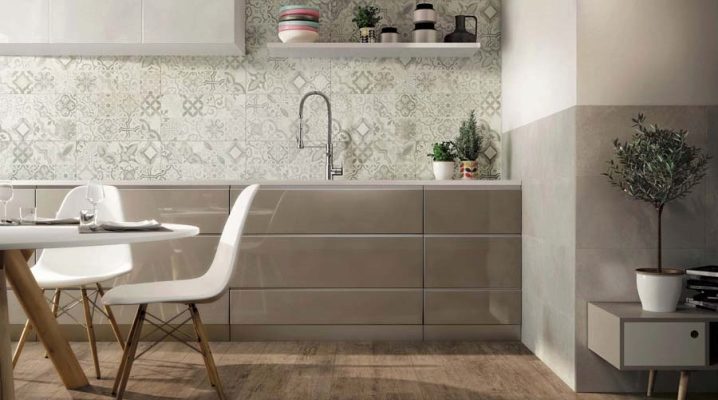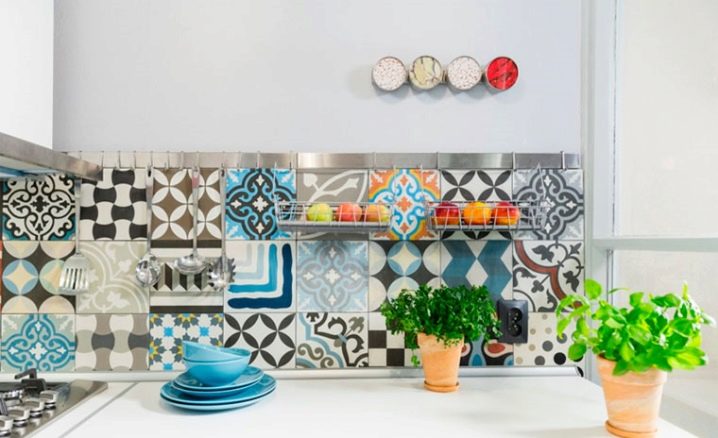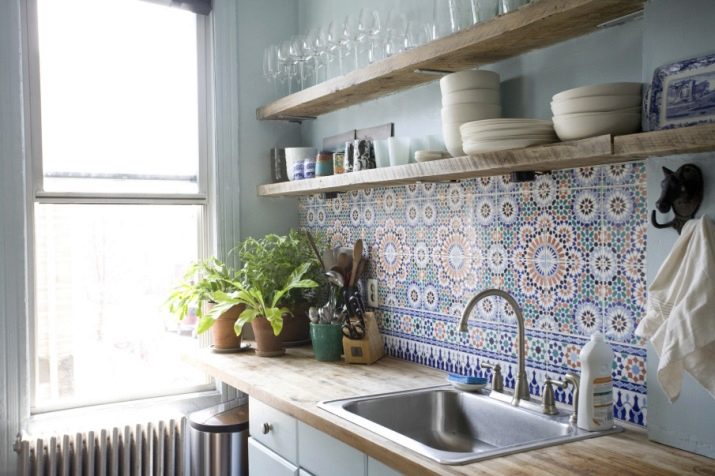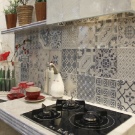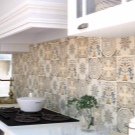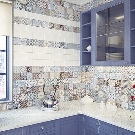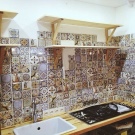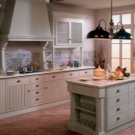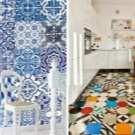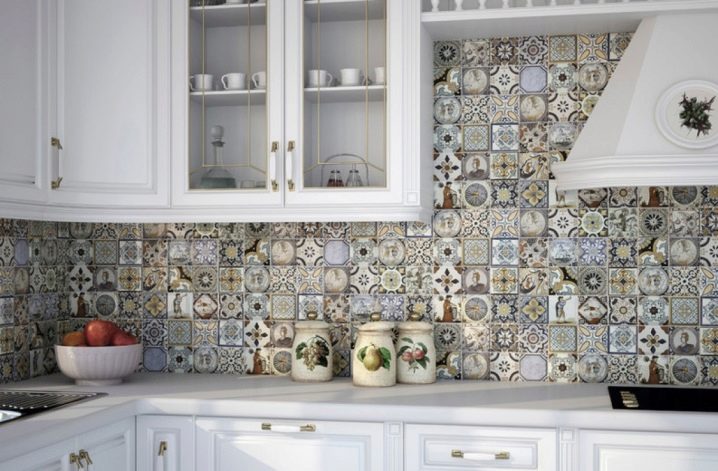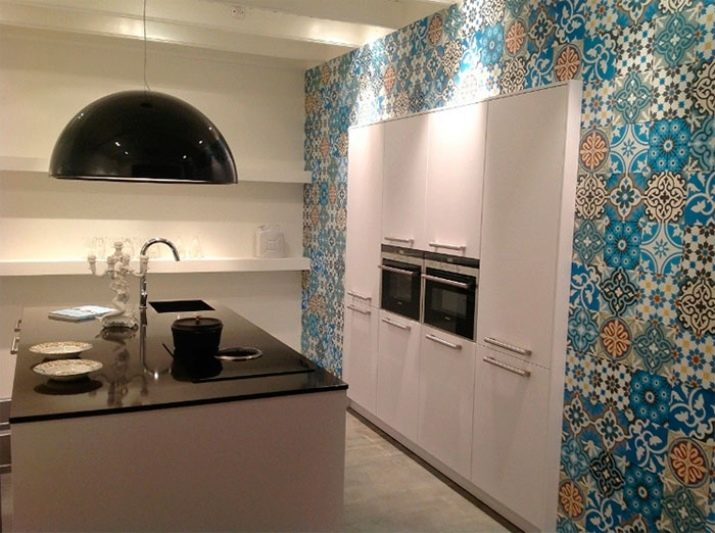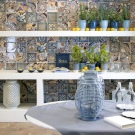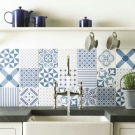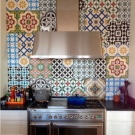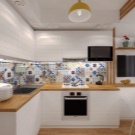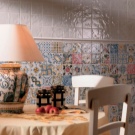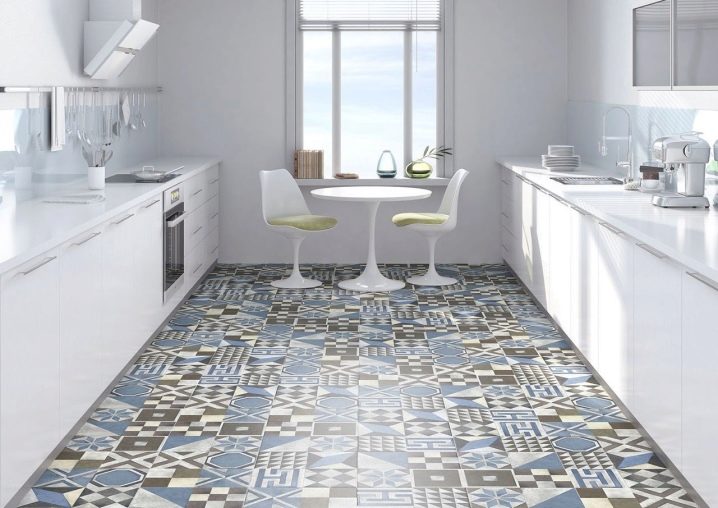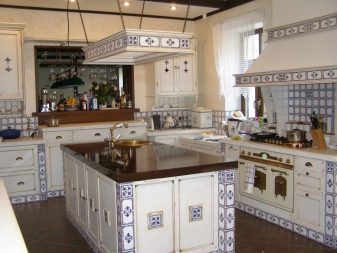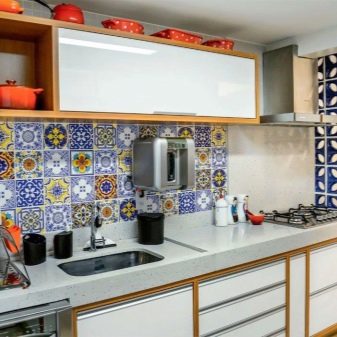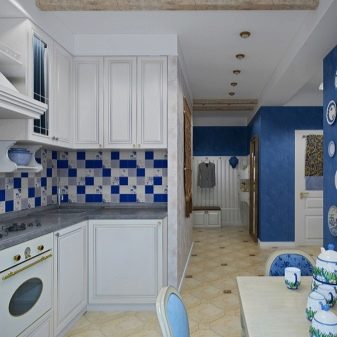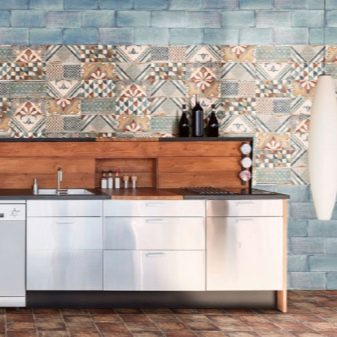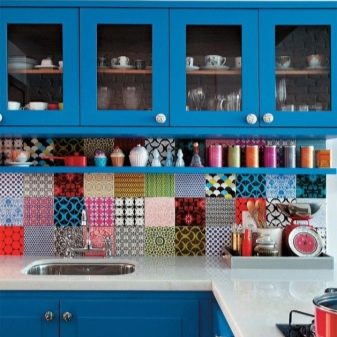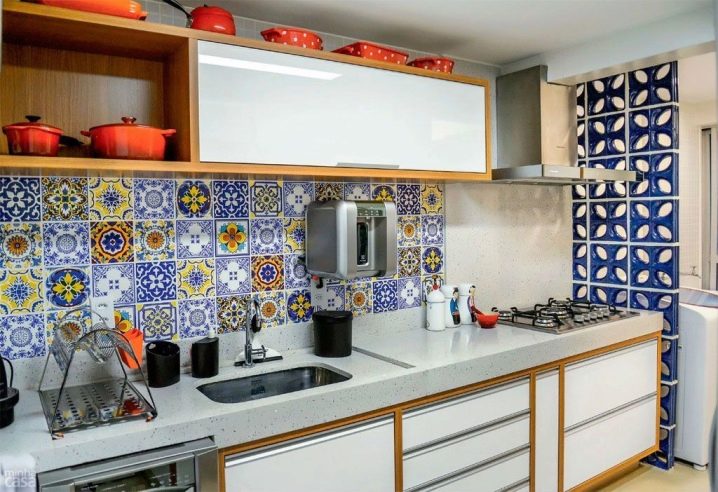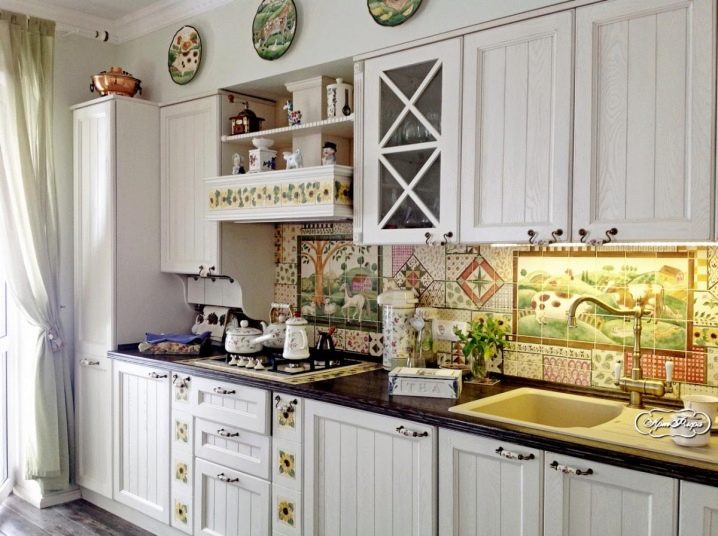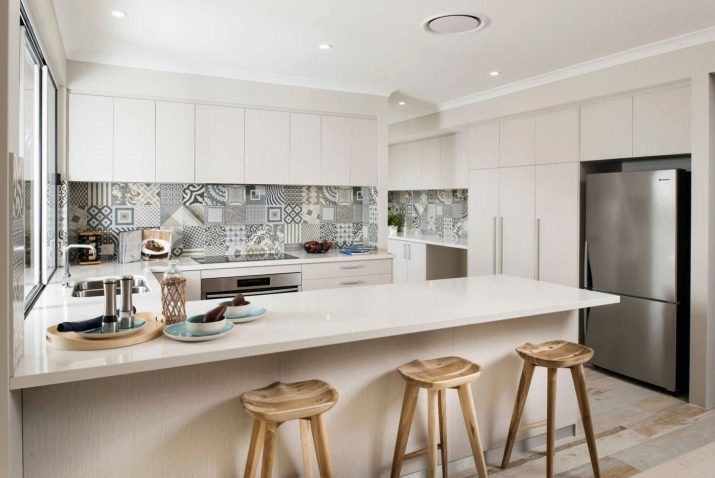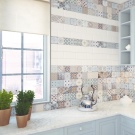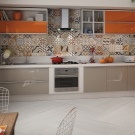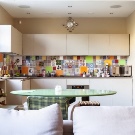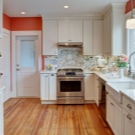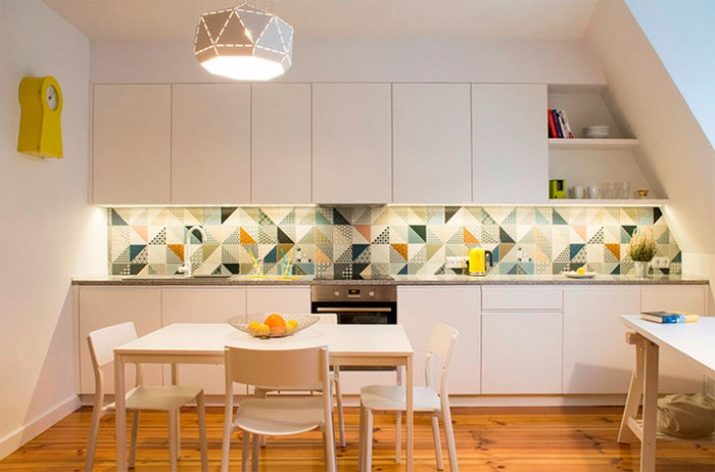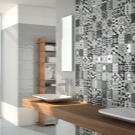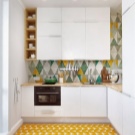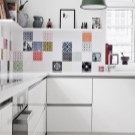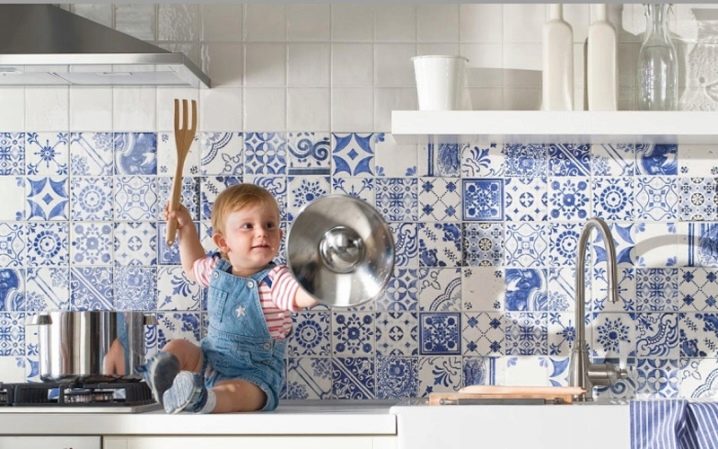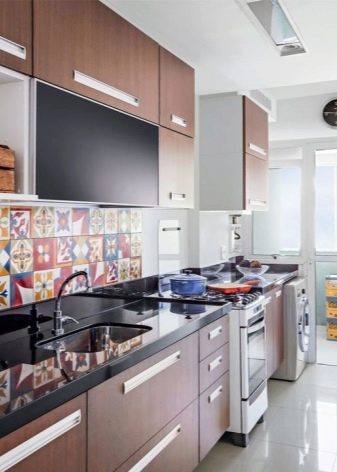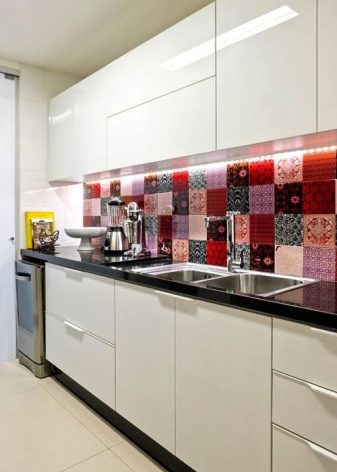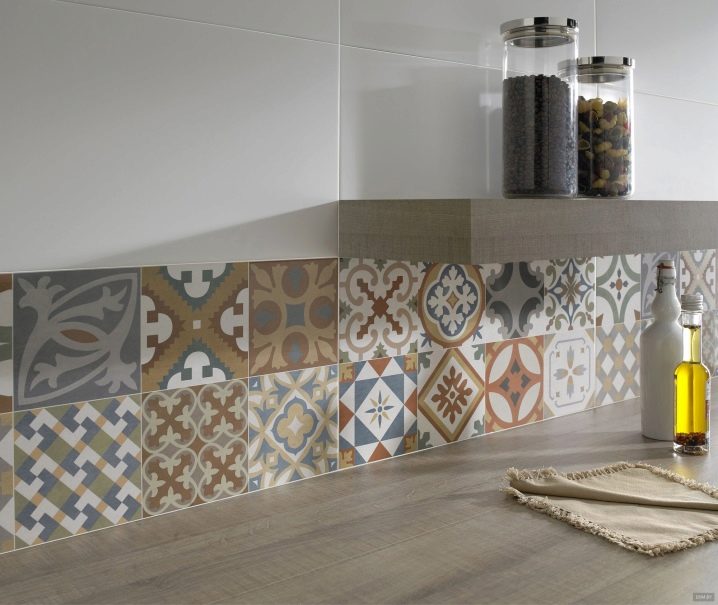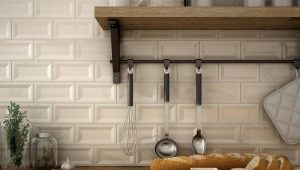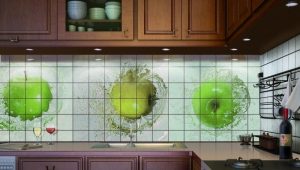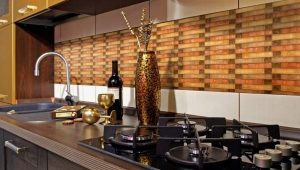Kitchen Patchwork Tiles
If you want to equip the kitchen with a decor that does not hit the budget, then pay attention to the patchwork technique. This technology began to show itself first in textiles.
Even in the times of ancient Egypt, various types of cloth were sewn together from unnecessary pieces of fabric: blankets, sheets, furniture covers, curtains.
Today, the patchwork style is distributed in various areas of interior design. In the kitchen, it is represented by high-quality ceramic tiles, tiles, hog, etc.
Selecting, for example, a kitchen apron, you get a whole composition of multi-colored graphic patterns. Drawing most often has geometrical forms (circles, squares, triangles, rhombuses).
For the first time about fashion on patchwork started talking in the USA. This technology looks great in the style of country, kitsch, eclecticism. “Patchwork” elements in designs with the use of ceramic tiles in the style of Provence, rustic look harmoniously.In Europe, this technology was discovered only at the end of the 19th century thanks to Arabian majolica.
Special features
Designers recommend using “patchwork” cladding in rooms that are decorated in Oriental, Arabic, Mediterranean style. If you decide on a decorative panel, then it is suitable, including for vintage style. In the kitchen, such a decoration will take root in the area of the kitchen apron, wall, staircase or floor.
You can decorate a single wall with a decorative patchwork ensemble with a characteristic pattern. Best of all, if the furniture set will have a concise, modern appearance. Also try to pay attention to the tiles of a small or medium format (up to 15 cm in length).
The quilt on the floor will look amazing in the kitchen. From the very picture already breathes hospitality. If you decide to make a floor or a separate wall using the patchwork technique, then the furniture set should be monolithic, without any inserts, prints, mosaics or vinyl stickers. Wonderful modern design will help create a monotonous lining, made in neutral shades and the technology of patterned prints.
Today, such factories are known that produce background tiles "under the tree", azulezhu, Gzhel, like Cicogres, Almera Ceramica, Vives, Aparici Moving, etc.
Colors and prints
Exquisitely “patchwork” will look in the kitchen-living room. Create a harmonious space here by combining golden, silver and sand shades. Interestingly, the kitchen looks like a 45 x 45 cm floor tile and 25 x 50 cm wall tiles. The spectacular tile will imitate stitched patches with a curious geometric print. You will not lose if you choose Gzhel painting, which gives an excellent effect for the interior in Provencal, Russian folk style.
Pay attention to the tile with a smooth, glossy surface, which creates the impression of a seamless ceramic canvas. Here it is better to use a thin grout seam. Incredibly the atmosphere will give patchwork with imitation "antique".
Charming decor offer shades of gray, blue, pearl. If the kitchen has an exit to the balcony, it should also be arranged in a patchwork style. Suitable for drawing in vegetable, graphic, and fantasy ornaments.
The color of ocher, azure and indigo looks elegant and noble.It is possible to bury the kitchen with the help of a ceramic plate decorated with pastoral plots, the image of berries, fruits on a white background. Using the patchwork technique, you can create an original panel above the hob or sink, combine tiles of two directions, styles. When facing a kitchen apron, experts advise to use friezes from the same collection as the tile itself. Not bright tonality should alternate with variegated, bright prints, setting the mood throughout the room.
It will not be superfluous to decorate some textiles in the kitchen with the same pattern as the kitchen apron with patchwork. It can be a curtain, tapestry of chintz, organza. This method of design space is formed on the principle of mosaic. Ceramic tiles, for example, "hog", laid out in a specific order, gathering in a patchwork picture. Bright areas will certainly color the solid interior, and the final composition will be evaluated "by eye".
Benefits
If you like the white kitchen, then at any time you can “dress up” in such a simple mosaic. Come up with an individual design of an apron or floor covering to make a good accent in the interior decor.An important advantage of this design method is the ability to self-assemble a design composition. You can pick up color modules (tile) from different collections. In this case it is necessary to adhere to the general color scale, play on contrasts.
An important feature of the patchwork technique was the absence of any prohibitions. You decide how to lay the tile, combine several ways of its installation (diagonally, horizontally, offset, vertically). The most organic styles for such a “picture” are restrained British, village, Provence, Rustic, Country or Maritime style.
How to make an apron
First of all, mark the clear boundaries of the future apron. It is very important that they coincide with the contour of the furniture set. It will be rational if you start to equip an apron zone before purchasing cabinets, canisters, household appliances. Experienced specialists will help to make measurements of both the coating itself and surrounding objects. Make sure that the edges of the apron go beyond the maximum value from the indentation of the furniture.
There are average levels at which the apron should start (85 cm from the floor and up to 70 cm in height).It is important not to leave an additional section, which will visually distinguish between a multi-colored zone with a refrigerator, a window, a bar, etc. If you want to save the budget, then take a tile or ceramic tile with the ability to place in any plane.
Remember that the diagonal installation method takes the most modules.
It is also important to consider the aesthetics and durability of such material. For this, special solutions against mold and fungi are additionally purchased. The place of the joints itself must be treated with a protective varnish applied in a perfect even layer.
You will facilitate the care of the tile, if you take not the relief, and models with a smooth surface. They will not intensively accumulate fat, dirt. It is enough to walk with a damp cloth all over the apron to return him a neat appearance.
Drawing, design, the brightness of the tile itself should be chosen, taking into account the remaining elements of the decor (dining table, tabletop, wall cabinets, and facades, flooring, textiles). Not bad proven products of tile and ceramics. These are quite durable, hard materials that are resistant to external influences, such as temperature, steam, humidity.
When choosing plastic panels, pay attention to large sheet sizes. Thus, a minimum of fat will get clogged in the joints, and washing the apron will be easy and fast.
